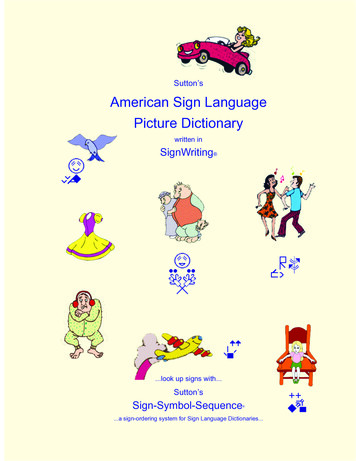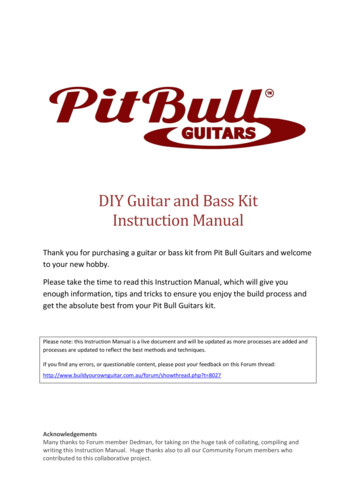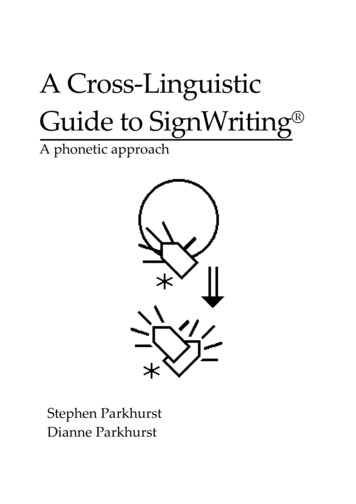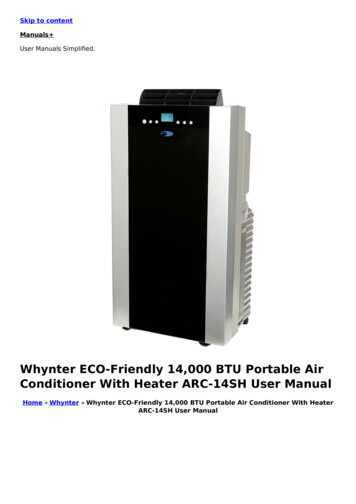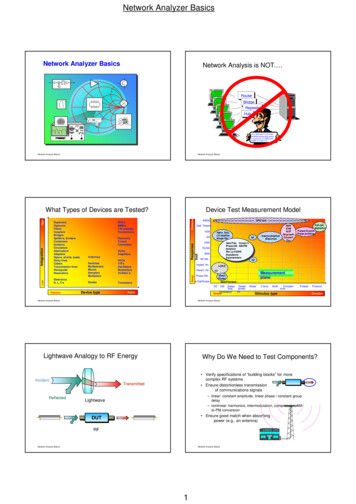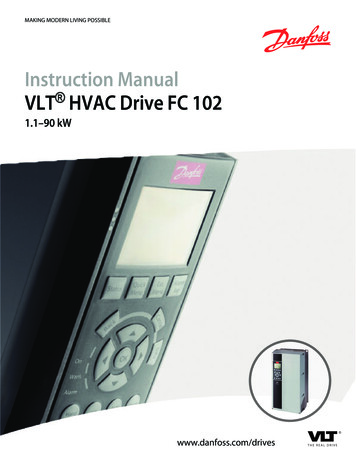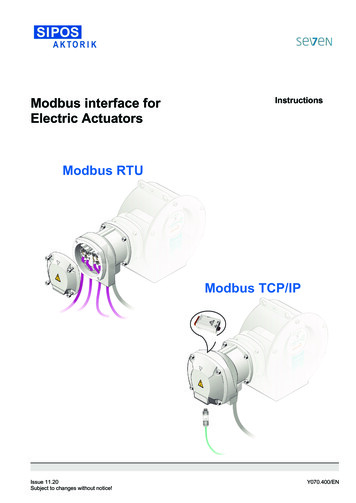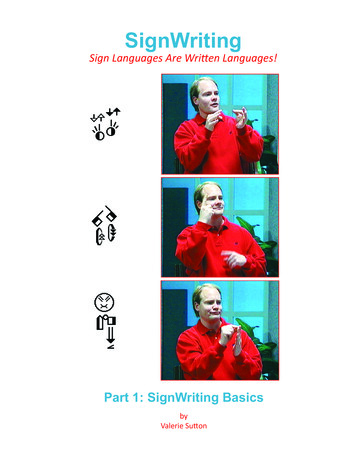
Transcription
SignWritingSign Languages Are Written Languages!Part 1: SignWriting BasicsbyValerie Sutton
SignWritingSign Languages Are Written Languages!Part 1: SignWriting BasicsbyValerie SuttonISBN: 978-0-914336-49-5First EditionCopyright 2009Center for Sutton Movement Writing, Inc.All Rights ReservedThe SignWriting System was firstinvented by Valerie Sutton in 1974.This book is based on theLessons in SignWriting Textbookby Valerie SuttonCartoons by Frank Allen PaulIllustrations byIda Candelaria & Jayne GundersonPhotos of Kevin Clark & Lucinda O’Grady Batchare captured from theLessons In SignWriting Video Series DVDThis book was prepared with SignPuddle Online.SignPuddle Software by Stephen E. Slevinski, JrThis manual is posted on the web:SignWriting Lessons Onlinehttp://www.SignWriting.org/lessonsThis publication and the SignWriting System are freeto use under the Creative Commons Attribution 3.0 Published byThe SignWriting Presshttp://www.SignWriting.org/shopThe SignWriting Literature Projecthttp://www.SignWriting.org/literatureDeaf Action Committee for SignWritinghttp://www.SignWriting.org/deafCenter for Sutton Movement Writing, Inc.an educational 501c3 non-profit organizationP.O. Box 517 La Jolla CA 92038-0517 USASignWriting.org SignBank.org SignPuddle.orgEmail: sutton@signwriting.org Tel 858-456-0098
Learn SignWriting on the web!Download books & view videos: www.SignWriting.org/lessons
Cartoons by Frank Allen PaulWith SignWriting,you can.WRITESignLanguageREADSignLanguagePRESERVESign Poetryand TheaterWrite SignWriting on the web!Write signs and Sign Language documents: www.SignPuddle.org
nguageMEET SignersWho WriteSign Language Too!Join the SignWriting Email List!Go to this web page to join: www.SignWriting.org/forums/swlist
Receptive ViewpointWhen someone is facing you, signing to you, you view the signs as an observer.The signer's right side is your left side. This is called the Receptive Viewpoint.1
Expressive ViewpointWhen you are signing to someone else, you see signs from your own point of view.This is called the Expressive Viewpoint.2
TheExpressiveViewpointRead and write signs asif you are looking at yourown hands, from your ownperspective.Palm ofHandWhen you see the palmof your hand, while youare signing, the symbol forthe hand will be white, orhollow.The palm of the hand isalways written with a white,hollow symbol.3
Side ofHandWhen you see the side ofyour hand while you aresigning, the symbol for thehand will be half black andhalf white.The white part of the symbol shows where the palmof the hand faces. The darkpart represents the back ofthe hand.Back ofHandWhen you see the back ofyour hand while you aresigning, the symbol will beblack, or filled-in.The back of the handis always written with ablack, filled-in symbol.4
Left Side of HeadThe head is written with a circle, viewed from the back. When the left handis near the left side of the head, the symbol for the hand is placed to the left:know(hand on the left side)Note: An asterisk means touch.Two asterisks mean touching two times.5
Right Side of HeadThe head is written with a circle, viewed from the back. When the right hand isnear the right side of the head, the symbol for the hand is placed to the right:know(hand on the right side)Note: An asterisk means touch.Two asterisks mean touching two times.6
Left Side of FacePretend you can see through the back of the head.You are reading and writing how your face “feels” when you sign:know(mouth pushed up on left side)7
Right Side of FacePretend you can see through the back of the head.You are reading and writing how your face “feels” when you sign:know(mouth pushed up on right side)8
3 Basic HandshapesClosedFistWhen the fingertips touchthe palm of the hand, it iscalled a Closed Fist.A Closed Fist is writtenwith a square.OpenFistWhen the fingertips toucheach other, it is called anOpen Fist.An Open Fist is writtenwith a circle.9
3 Basic HandshapesFlatHandWhen the fingers stretchstraight up, and toucheach other, it is called aFlat Hand.A Flat Hand is written witha rectangle, with a tip forthe fingertips.10Closed FistOpen FistBoth the letter S and the number 1 in ASL are written with asquare for the Closed Fist, sincethe fingertips touch the palm:Both the letter O and the letter D in ASL are written with acircle for the Open Fist, sincethe fingertips touch each other:
Palm FacingFront ViewThe hand is parallel with the front wall.11
Palm Facingspace atknuckle jointmeans handis parallelto the floor12Top ViewThe hand is parallel with the floor.
Palm FacingFront ViewThe hand is parallel with the front wall.13
Palm Facingspace atknuckle jointmeans handis parallelto the floor14Top ViewThe hand is parallel with the floor.
Palm FacingFront ViewThe hand is parallel with the front wall.15
Palm FacingTop ViewThe hand is parallel with the floor.space atknuckle jointmeans handis parallelto the floor16
Palm FacingFront ViewThe hand is parallel with the front wall.17
Palm FacingTop ViewThe hand is parallel with the floor.space atknuckle jointmeans handis parallelto the floor18
Palm FacingFront ViewThe hand is parallel with the front wall.19
Palm Facingspace atknuckle jointmeans handis parallelto the floor20Top ViewThe hand is parallel with the floor.
Palm FacingFront ViewThe hand is parallel with the front wall.21
Palm FacingTop ViewThe hand is parallel with the floor.space atknuckle jointmeans handis parallelto the floor22
6 Contact Symbols1. Touch2. Grasp3. Between4. Strike5. Brush6. RubTouchTouch Contact is writtenwith an asterisk.moreschoolTouch is defined as thehand gently contactinganother part of the body.23
GraspGrasp Contact is writtenwith two crossed lines.earringcongratulationsGrasp is defined as the handgrasping or pinching a partof the body or a prop, suchas clothing.BetweenBetween Contact is written with a Contact Symbolbetween two lines.disappear24AmericaBetween is defined as contacting between two fingersor other parts of the body.
StrikeStrike Contact is writtenwith two lines crossing twolines.hitclapStrike is defined as thehand contacting a surfacewith force.BrushBrush Contact is written with a circle with adark dot in the center.excuse memonthlyBrush is defined asmovement that firstcontacts and thenmoves off the surface.25
CircularRubCircular Rub Contact iswritten with a spiral.coffeechocolateRub is defined as contactthat moves, but stays onthe surface.StraightRubStraight Rub Contact iswritten with the same spiral symbol, but the spiralsymbol is connected witha straight arrow.When the Rub Contactsymbol is connected withan arrow, it rubs in aneat26eagerstraight line (not in a circle).It stays on the surface butmoves in the direction ofthe arrow.
6 Finger Symbols1. Squeeze, Middle Joint Closes2. Flick, Middle Joint Opens3. Hinge, Knuckle Joint Closes4. Hinge, Knuckle Joint Opens5. Hinge, Knuckles Open & Close Together6. Trill, Knuckles Open-Close AlternatingMiddle JointSqueeze & FlickKnuckle JointHinge & TrillMiddle Joint Finger Movements, also called Squeezeand Flick Movements, arewritten with small dots.Knuckle Joint Finger Movement, also called Hingeand Trill Movements, arewritten with small arrows.27
Middle JointClosesWhen the middle joint of thefinger squeezes tight (bendsdown or in), this closingfinger movement is writtenwith a dark dot.huh?milkThe dot is placed near thefinger joint that does thesqueezing. Two dots represent two squeezes.Middle JointOpensWhen the middle joint of thefinger flicks open (goes frombent to straight), this opening flicking movement iswritten with a hollow dot.eleven28understandThe dot is placed near thefinger that flicks. Two dotsrepresent two flicks.
Knuckle JointClosestwentyboyThe middle joint of thefinger locks, while theknuckle joint bends down,like the Hinge on a door.This closing knucklemovement is written witha small arrow that pointsdown. The arrow pushesthe fingers down. Twoarrows mean 2 hinges.Knuckle JointOpenssendsend-sendThe middle joint of thefinger locks, while theknuckle joint bends up,like the Hinge on a door.This opening knuckle movement is writtenwith a small arrow thatpoints up. The arrow pullsthe fingers up. Two arrows mean 2 hinges up.29
Knuckle JointsOpen-CloseThe fingers move togetherin the same direction, asa unit. The knuckle-jointsof the fingers open andclose (bend up and down)together. This open-closegoodbyewhyknuckle movement iswritten with one row ofsmall connected arrowspointing up and down.Knuckle JointsAlternateThe fingers do not movetogether in a unit. Insteadthey hinge in opposite directions. One moves up,as the other moves down.This Alternating FingerMovement, also calledFinger Trills, is writtenfingerspell30typingwith two rows of small arrows pointing up and down.
Up-Down MovementUp-Down Movement is parallel with the Front Wall or your chest.It is written with double-stemmed nalDown31
Forward-Back MovementForward-Back Movement is parallel with the Floor or a table top.It is written with single-stemmed ckDiagonal32BackDiagonal
Movement With The Right HandA dark arrowhead.Front ViewTop ViewMovement With The Left HandA light arrowhead.Front ViewTop View33
Movement To The SideMovement to the side can be viewed from either the Front View or the TopView. It can be written with either double-stemmed or single-stemmed arrows.Front ViewTop ViewGeneral ArrowheadWrites Overlapping PathsfollowI help you.34planWhen a right movement arrowwrites ON TOP OF a left movement arrow, the two movementpaths overlap each other. Thetwo arrows blend together. Thedark arrowhead and the light arrowhead become one arrowhead,called the General Arrowhead.Often the hands are contactingwhen moving in overlapping paths,but it is NOT ONLY for contactinghands. For example, two hands canbe parallel, side by side, withoutcontact, and then both move to thesame side, so that the right arrowwrites on top of the left arrow. Thiscreates a General Arrowhead.
Do not confuse these arrows:doublestemmedarrowsmeanmovementis UPsinglestemmed arrowsmeanmovementis FORWARD35
Straight MovementUp or DownmonthlydisappearA double-stemmed arrowmeans that the movementis straight up or down,parallel with the front wall.The movement is flat withthe front of your body.Straight MovementForwardor Backexcuse me36eagerA single-stemmed arrowmeans that the movement is forward or back,parallel with the floor.You are looking down,on top of the movement.
Front ViewHands parallel with the Front Wall.one halfDeafwhereTop ViewHands parallel with the Floor.happenyoualso37
Front ViewHands parallel with the Front Wall.dinnerdatingdemocracyTop ViewHands parallel with the Floor.do-do?38dessertdoctor
Front ViewHands parallel with the Front Wall.windowhousehis, hersTop ViewHands parallel with the Floor.thingsway, streetchildren39
Period,Pause,writtenEnd ofCommaSentencehorizontallyEnglish Translation: Writing ASL from the Deaf perspective.4021
ionMark,Slight Pauseat End ofSentencewhere?31English Translation: Where is the house?41
FastMovementTensionSymbolEnglish Translation: Baby Bear asks “Who are you?”Goldilocks saw the bears, became frightened,shot out of the house, and ran all the way home.42
1Gospel According to Johnin American Sign llain American Sign LanguageSleeping Beautyin American Sign Languagewww.SignWriting.org/library/childrenin American Sign ignWriting.org/library/children3Cat in the Hat by Dr. SeussSignPuddle SoftwareWrite Documents in Any Sign Languagewww.SignBank.org/signpuddle6SignBank SoftwarePublishing Tool for All Sign Languageswww.SignBank.org/signbank.htmlA SignWriting BookThe SignWriting Literature ProjectDeaf Action Committee For SignWriting (DAC)PO Box 517, La Jolla, CA, 92038-0517, USADAC@SignWriting.org www.SignWriting.org
10 3 Basic Handshapes Flat Hand When the fingers stretch straight up, and touch each other, it is called a Flat Hand
